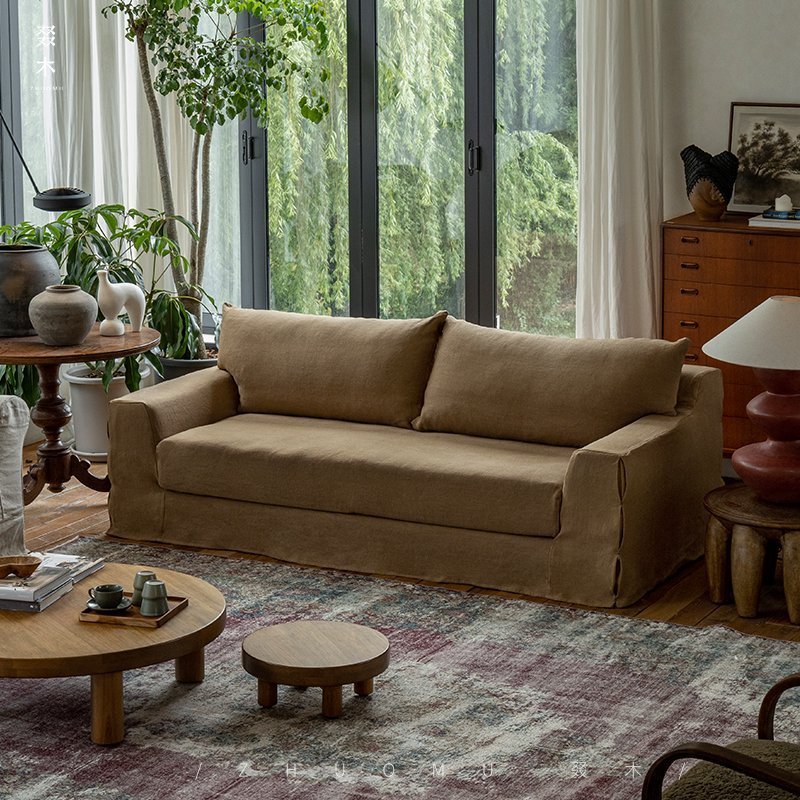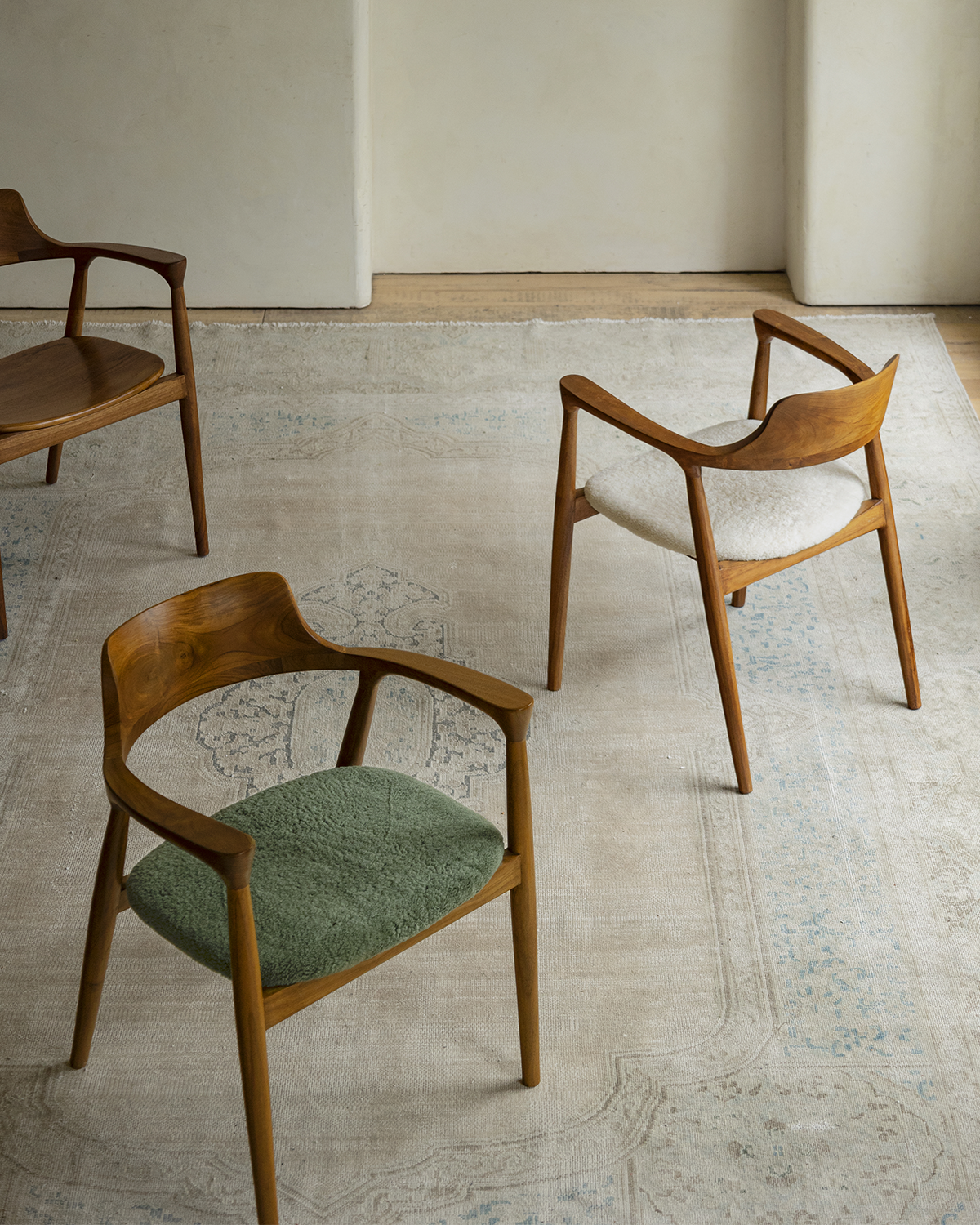
How to Stop My Sofa from Sagging: Easy Fixes and Prevention Tips
Key Takeaway
You can prevent your sofa from sagging with simple solutions such as incorporating support boards, new cushion inserts, and a sturdier base. To avoid future sagging, you can rotate cushions, use quality material, and keep your sofa well-maintained. These habits are useful in restoring your couch's firmness and extending your sofa's lifespan without sagging.
Is your favorite sofa starting to look more like a hammock than a comfy seating spot? That feeling of sinking into your couch might be relaxing for a moment, but a saggy sofa can quickly become uncomfortable and an eyesore. Don't hurry to throw out that beloved piece of furniture! You can bring back its support and comfort with a few simple fixes. Learn to spot the real problem—worn-out cushions, weak springs, or the frame itself. We'll cover easy DIY repairs and clever tricks to prevent future drooping, making your favorite seat feel firm and new again.
Why Do Sofas Sag?
Sofa sagging is usually a mix of time and gravity taking their toll on the parts you can't see. A sofa is built with layers of support, and when one part fails, it starts to sink.
The Natural Process of Sofa Wear
Sofas, just like mattresses, naturally compress over time with regular use. The materials inside get squashed down and lose their original bounce. This is normal, but some issues can speed up the process.
The Usual Suspects Inside Your Sofa
Most sagging issues begin with the core elements deteriorating. Determining which one is the culprit is the initial step to fixing it.
- Stretched-Out Springs: The majority of sofas feature a grid of metal springs (typically S-shaped wires) that supply bounce and support. Years of use may make the springs lose tension, bend, or even break, forming a visible crater in your seat.
- Torn Webbing Support: In place of springs, a few sofas feature a net of fabric straps, or webbing, stretched tight across the frame. The webbing will tear, fray, or lose its resilience, and your cushions will have nothing to sit upon but a gaping hole.
- Compacted Cushion Guts: The foam inside your cushions becomes compressed flat with use, having lost the airy quality that once kept it firm. Loose fillings, such as down or polyester, can move around and clump together to form uncomfortable lumps and hollows.
Poor Quality Materials and Construction
The quality of the sofa materials is a huge factor. Cheaper sofas often use low-density foam and weaker frames that simply give out much faster. If your new couch is already dipping, a flimsy build is the likely reason.
Uneven Weight Distribution and Usage
Habits matter, too. Always claiming the same end of the couch creates a "favorite spot" that wears out much faster than the rest. This leads to uneven sagging, making one side feel more dipping than the other.
Poor Maintenance
If you don't rotate your pillows regularly or fluff them up, they can wear out unevenly and sag in places, causing your couch to sink on one side.

How to Fix a Sagging Sofa
If your couch is already sagging, you can make it firm and comfortable again in several ways. These fixes range from quick DIY solutions to more involved repairs.
Add Cushion Support Boards
Installing a sofa support board is a quick and cheap solution for a sagging couch. Such boards are typically made of plywood or particle board and are placed underneath the seat cushions, offering immediate firmness. You can purchase the best sofa support board for sagging online or create one to size. This will work well on leather and fabric couches.
To provide support for a sofa: Take off the cushions, put the board on the frame, and put the cushions back. The extra support raises a sunken sofa or loveseat and prevents the cushions from sinking down further.
Replace or Refill Cushion Inserts
Couch cushion support often fades as the foam inside breaks down. Replacing old, flattened foam with high-density foam inserts or adding polyester fiberfill can make your sofa cushions firm again. This is a great DIY sofa repair for those who want a long-lasting fix. Don't be afraid that you can't replace the foam in couch cushions; most cushions have zippers or Velcro closures, making it easy to swap out the old foam for new, supportive material.
Reinforce the Sofa Base
A weak frame or broken springs can cause a dipping couch. Reinforcing your couch frame with new webbing, strapping kits, or tightening loose screws can restore your couch's firmness. For a DIY solution, use interlocking foam mats or webbing kits for extra support.
For broken sofa springs repair, if you hear squeaks or feel uneven spots, check the springs under the seat. Replace broken springs or secure loose ones with pliers and zip ties for a cheap way to fix a sagging sofa.
Rotate and Flip Cushions
Rotating and turning over your seat cushions every couple of weeks evenly distributes wear and prevents sagging in one spot. It's a critical part of couch maintenance tips and can extend the life of your sofa.
Prevention Tips to Keep Your Sofa from Sagging Over Time
While fixing a sagging sofa is satisfying, it's even better to keep it from happening in the first place. Good care tips for your couch can prolong your furniture's life.
Flip and Rotate Your Cushions
This is the most effective trick in the book. Once a week, or at least twice a month, flip your seat and back cushions. Swap their positions too—move the left cushion to the right and the middle one to the end. This simple chore spreads the wear and tear evenly, so one spot doesn't get all the punishment.
Fluff Loose Fill Cushions
If your cushions have loose fillings like down or fiber, give them a good punching and fluffing regularly. This breaks up clumps and redistributes the filling to keep them from looking lumpy or developing hollow spots.
Switch Up Your Seating Spot
We all have a favorite spot, but sitting in the same place every day puts a lot of stress on one area. Make a conscious effort to use the entire sofa, so it wears down evenly over time.
Make the Couch a No-Jump Zone
A sofa might look like a fun trampoline to kids, but it's not built for that kind of impact. Jumping puts massive strain on the frame, springs, and webbing, leading to quick damage.
Look for a Solid Hardwood Frame
A frame made from kiln-dried hardwood (like oak or maple) is the backbone of a durable sofa. Steer clear of frames made from particleboard or soft pine.
Choose High-Density Foam
Ask about the foam in the cushions. High-density (HD) or high-resilience (HR) foam costs more but holds its shape much longer than the cheaper, low-density stuff that flattens out quickly.
Check the Support System
Look underneath the cushions if you can. The best sofas use a system called 8-way hand-tied springs. A more common and still durable option is heavy-gauge sinuous springs (S-shaped wires) that are close together and secured firmly to the frame.
Do Basic Cleaning Regularly and Promptly
Cleaning sofas is not just for appearances. Dust and dirt can penetrate cushion stuffings and inner frame, leading to compaction and premature wear. Moisture from spills will weaken fabric and even interior components if left unattended.
When to Call a Professional Upholsterer for Sofa Repairs
Although the majority of sagging problems can be fixed with DIY solutions, there are times when a professional's expertise is worth the cost.
Widespread Frame Damage
If your sofa's wooden frame is broken, cracked, or unstable beyond mere reinforcement, an upholsterer possesses the equipment and expertise for a professional sofa frame repair.
Complex Spring Repairs
Re-tying standard coil springs or large-scale replacement of sinuous springs may be difficult. If you are not comfortable with these detailed tasks, you can have an expert do it.
Requirement for Full Reupholstery or Restoration
If your sofa is an antique or a cherished piece with sentimental value, which needs to be fully restored (new fabric, new springs, new foam), an upholsterer can restore it to its former glory. This is a comprehensive easy couch restoration.
Lack of Time or DIY Confidence
Sometimes, you just don't have the time, the tools, or the confidence to tackle a DIY project. A pro can quickly and effectively return your sofa to its former state.

Bring Your Sagging Couch Back to Life
Don't sentence your sagging sofa to the curb just yet. A little DIY magic is all it takes to revive it. New cushion foam, some support boards, or even just flipping the cushions regularly can work wonders. You'll save a comfortable seat—and a lot of cash—while bringing your favorite lounging spot back from the brink.
FAQs About Fixing a Sagging Sofa
Q1: What is the quickest way to fix a sagging sofa?
Placing a support board or plywood under the cushions is a fast and affordable fix that adds immediate firmness. This is often the best sofa support board for sagging and works for most couches.
Q2: How often should I rotate my sofa cushions?
Rotate and flip cushions every few weeks to ensure even wear and prevent sagging. This simple step is a key part of couch maintenance tips and helps keep your furniture from dipping.
Q3: Are support boards comfortable?
Support boards provide firmness but may feel too hard if overused. Adding a thin layer of foam on top can help balance comfort and support, making it a better sunken sofa fix.
Q4: My new sofa is already sagging—what can I do?
If your new sofa is already sagging, check the warranty and contact the manufacturer. In the meantime, adding a support board or replacing the foam can help firm up couch cushions and provide a temporary fix.
Q5: Why is my couch sinking on one side?
A couch sinking on one side usually means uneven wear, a broken spring, or a weak frame. Rotate the cushions, check the frame, and add support as needed to fix a sag in the middle of your couch or on one side.





